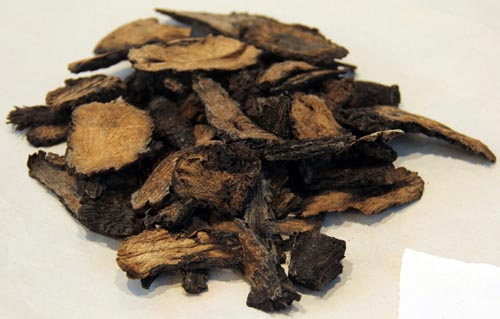The source is from the fleshy stem of Cistauche deserticola Y. C. Ma, family Orobanchaceae. The medicinal material is mostly produced in Inner Mongolia, Xinjiang, and Qinghai of China, etc., and is dug out in spring when there is no bud coming out, then cleaned and cut in-to thick pieces. It is used crudely or soaked in spirit.
Medicinal Properties: Sweet and salty in flavor, warm in nature, and attributive to the kidney and large intestine meridians.
Actions: Invigorate kidney-yang, supplement the essence and blood, moisten the intestine and relax bowels.

Application
1. It is applied for the deficiency of kidney-yang and insufficiency of the blood and essence manifested as impotence, sterility, soreness of waist and knees, or flaccidity of tendons and bones. For impotence, it is combined with Shudihuang ( Radix Rehmanniae Praeparata ), Tusizi (Semen Cuscutae ), and Wuweizi ( Fructus Schisandrae), etc., such as Roucongrou Wan (Pill); for sterility, usually with Lujiaojiao (Colla Comus Cervi), Danggui ( Radix Angelicae Sinensis ), Ziheche ( Placenta Hominis), etc.; for soreness of waist and knees, or flaccidity of tendons and bones, with Bajitian (Radix Morindae Officinalis ), Bixie ( Rhizoma Dioscoreae ), and Duzhong (Cortex Eucommiae ), etc., such as Jingang Wan (Pill).
2. For constipation due to dryness of the intestine, particularly in the aged with deficiency of kidney-yang and insufficiency of the blood and essence, it is usually combined with Danggui (Radix Angelieae Sinensis ), Zhike (Fructus Aurantii ), etc., such as Jichuan Jian (Decoction).
Usage and Dosage: 10 -15 g is used in decoction.
Notes: Contraindicated in the case with hyperactive fire due to deficiency of yin, or loose stool and also in the case with damp-heat in the intestine or stomach.








